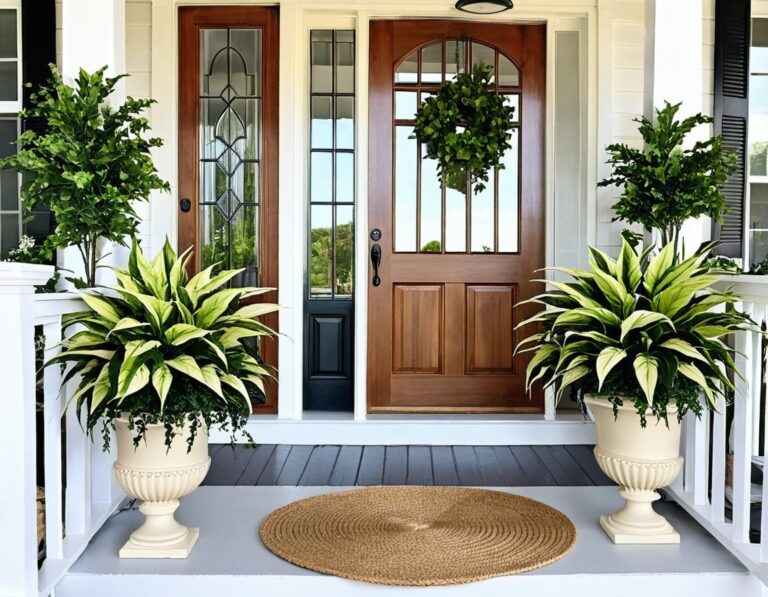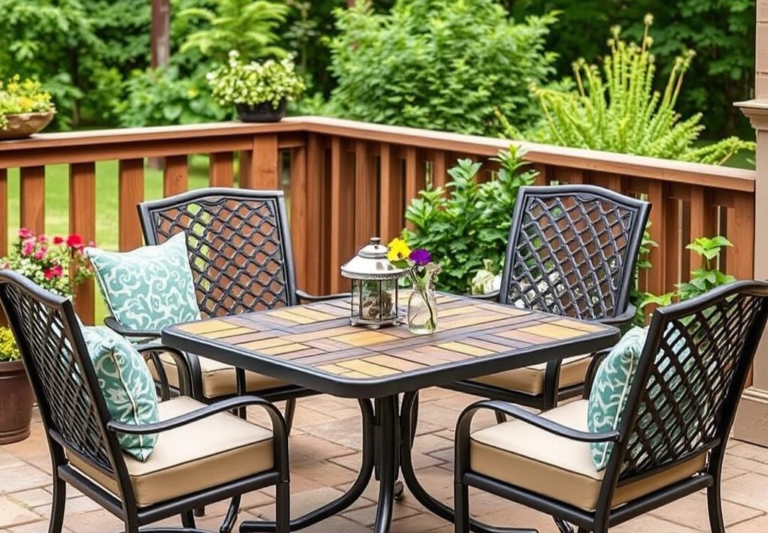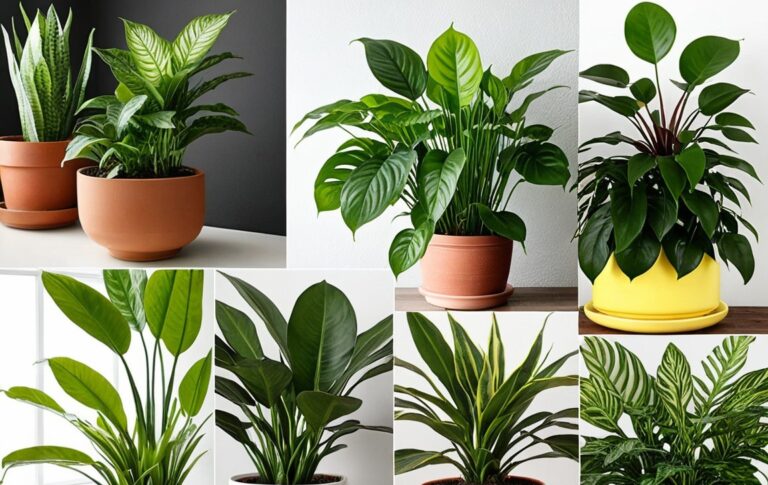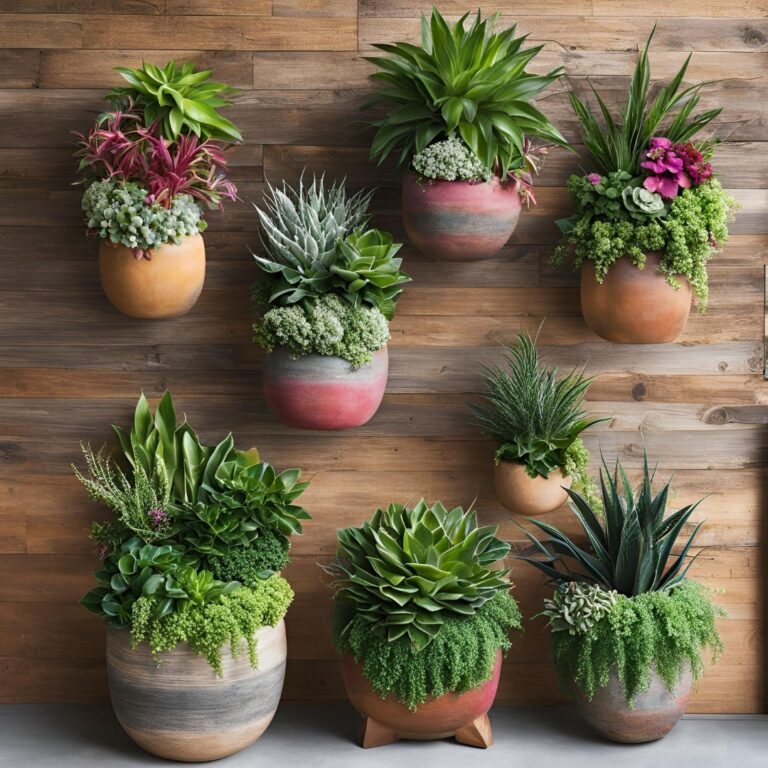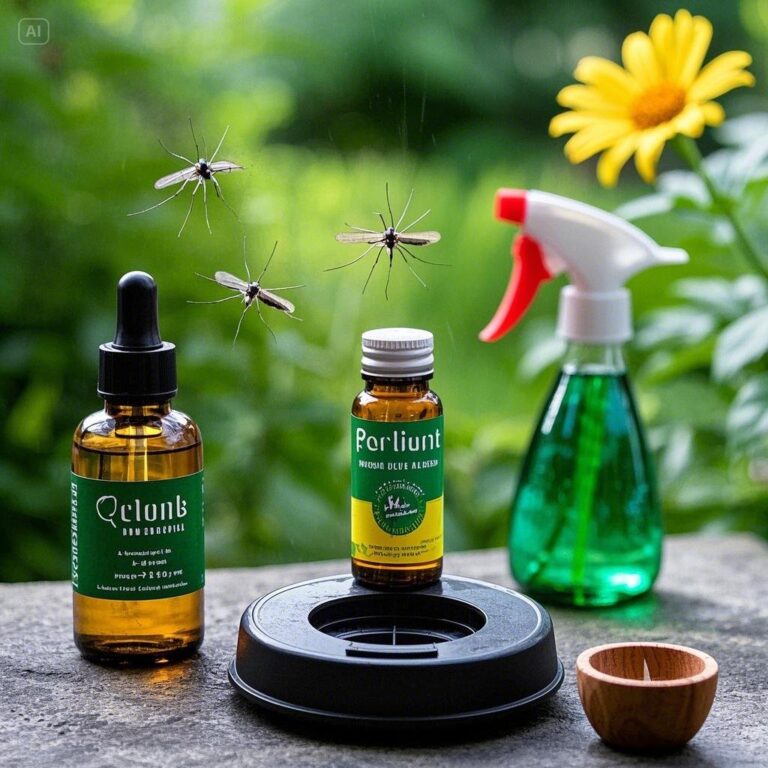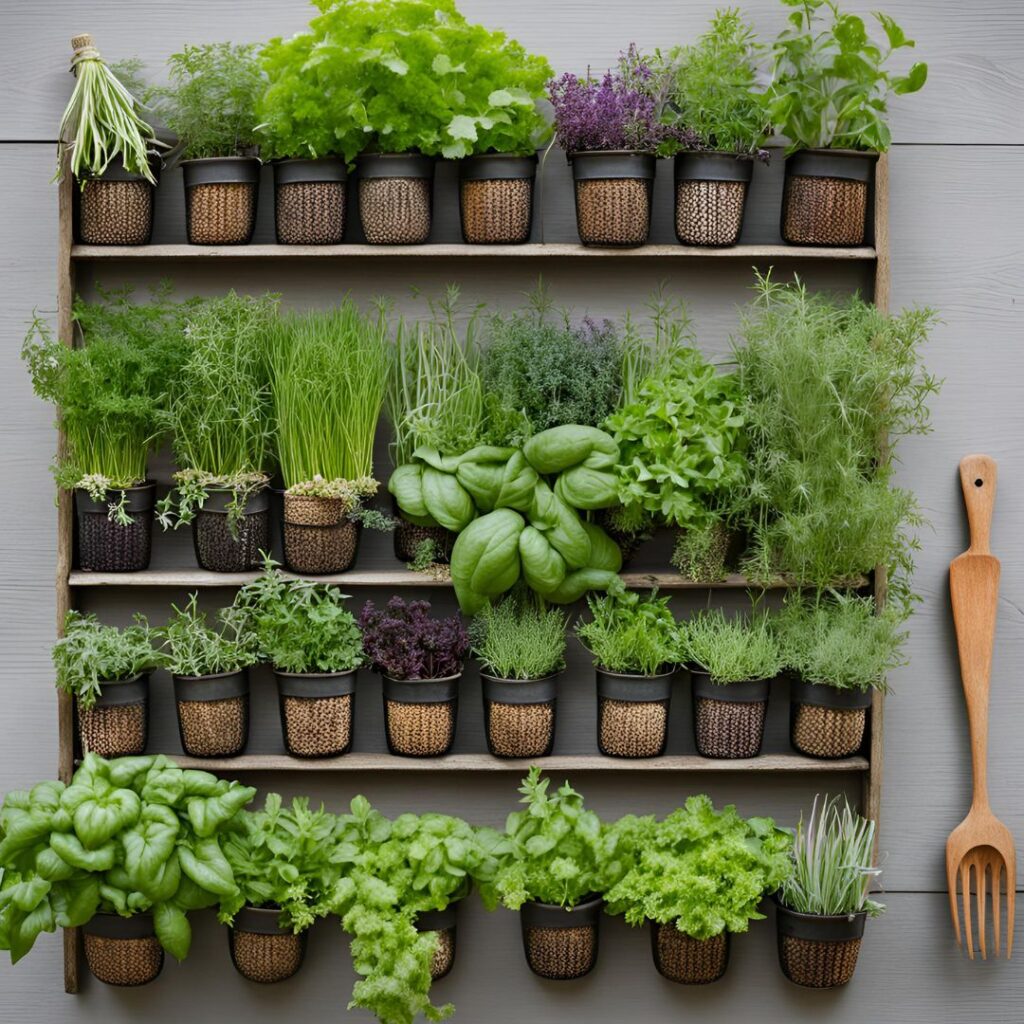
Creating a vibrant herb garden in a small space is entirely achievable with a bit of creativity and resourcefulness.
Whether you’re working with a tiny balcony, a windowsill, or an indoor nook, there are numerous ways to cultivate fresh herbs and enjoy their benefits.
By utilizing compact and innovative solutions, you can grow a variety of herbs without needing a large garden.
From repurposing vintage items to optimizing vertical space, these ideas will help you create a thriving herb garden that fits perfectly into any small area.
1. Go Vertical With Your Herb Garden
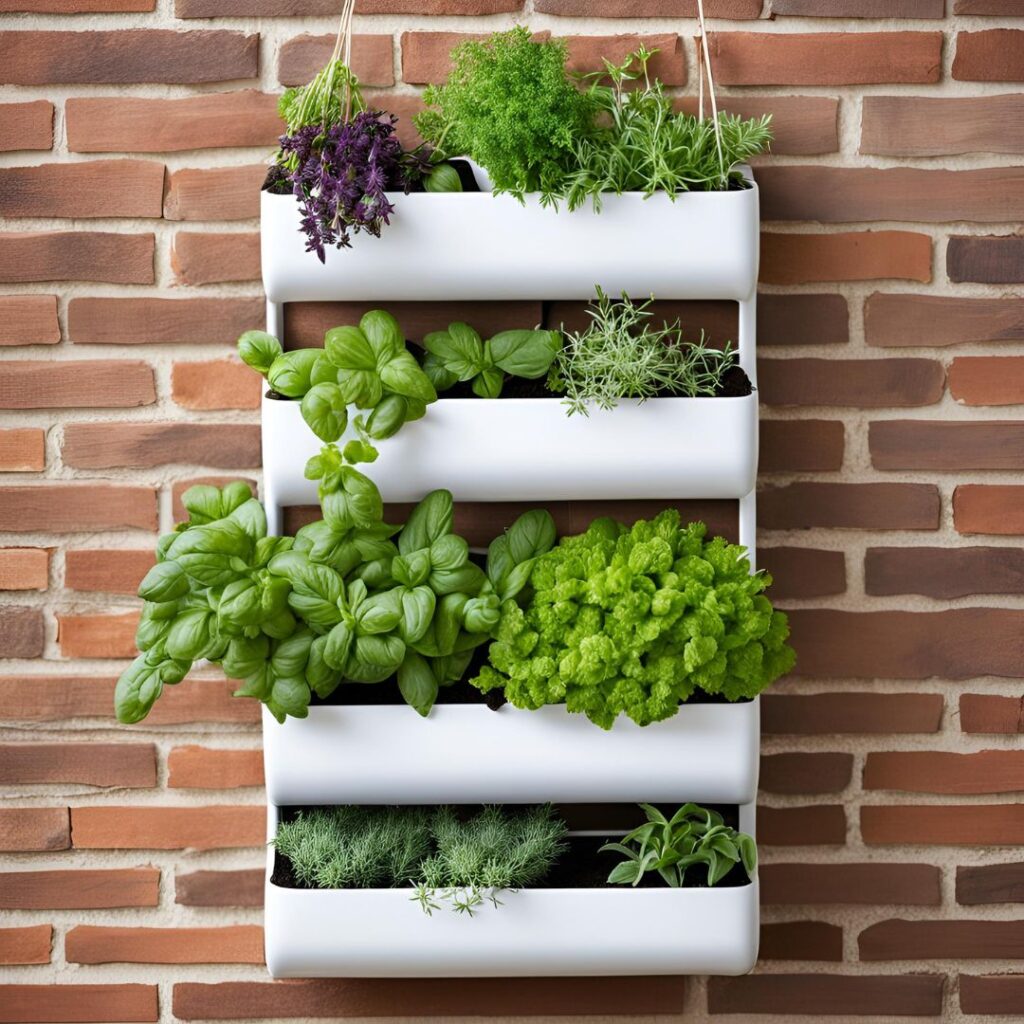
If you’re working with limited space, a vertical herb garden can maximize your gardening potential without taking up valuable ground space.
Vertical gardens can be created using various methods, from pre-made kits to DIY projects.
Kits are available that come with everything you need and are ready to hang, making setup simple and straightforward. Alternatively, you can craft your own vertical garden using materials such as old shoe organizers, pallets, or even gutters.
These vertical setups allow you to grow herbs in pockets or containers attached to a vertical surface, utilizing the vertical space effectively.
By incorporating a vertical herb garden, you can create a lush and productive garden even in compact areas. Plus, this method ensures your herbs are easily accessible and can add a touch of greenery to your living space.
2. Use A Windowsill For Your Herb Garden
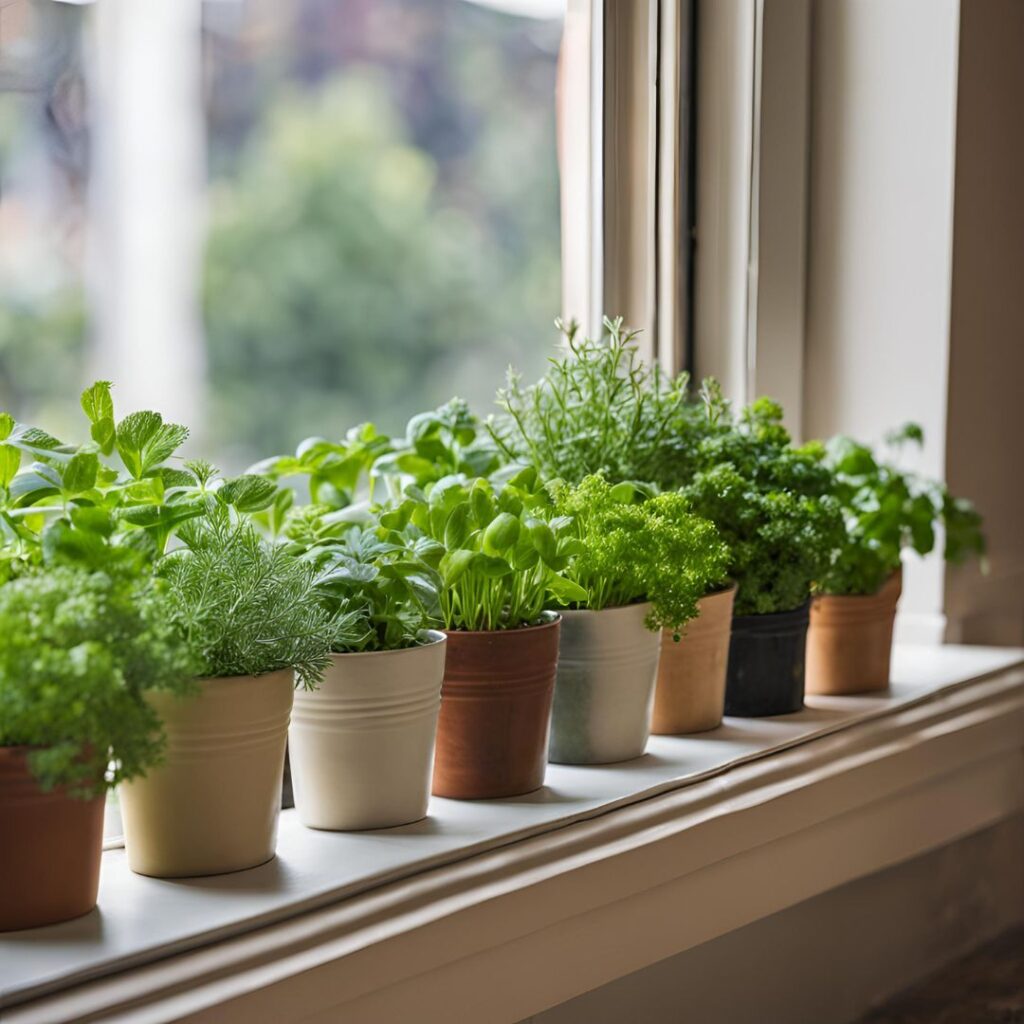
For those living in apartments or small homes without outdoor space, a windowsill herb garden is an excellent solution.
This small-scale garden takes advantage of the natural light that streams through your windows, making it ideal for growing herbs indoors.
A windowsill garden can be both functional and decorative, offering fresh herbs for cooking while brightening up your kitchen or living space.
Choose herbs that thrive in indoor conditions, such as basil, mint, or chives. Plant them in small pots or containers that fit comfortably on your windowsill.
This setup not only provides easy access to fresh herbs but also adds a touch of green to your home, enhancing both aesthetics and functionality.
3. Use A Vintage Shoe Organizer For Your Herb Garden
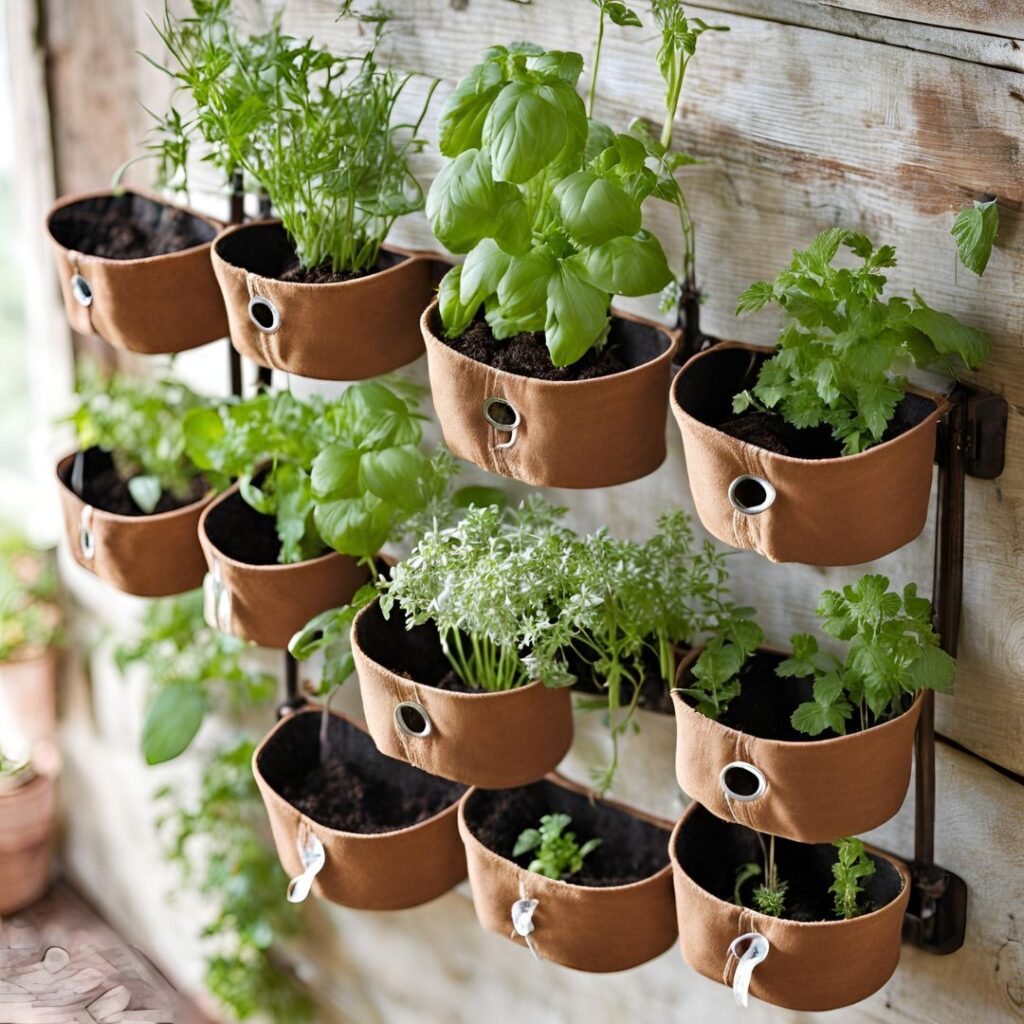
Transforming a vintage shoe organizer into an herb garden is a creative and practical solution for small spaces.
This method involves repurposing a shoe organizer, often made of fabric or plastic, to hold small pots or containers of herbs.
The pockets or compartments are perfect for growing different types of herbs, and the organizer can be hung on a wall or door, saving valuable floor space.
This DIY project not only makes use of an old item but also provides a stylish and organized way to grow herbs indoors or on a small patio.
Ensure the organizer is sturdy enough to hold the weight of the pots and check that it has adequate drainage to keep your herbs healthy.
4. Use A Vintage Spice Rack For Your Herb Garden
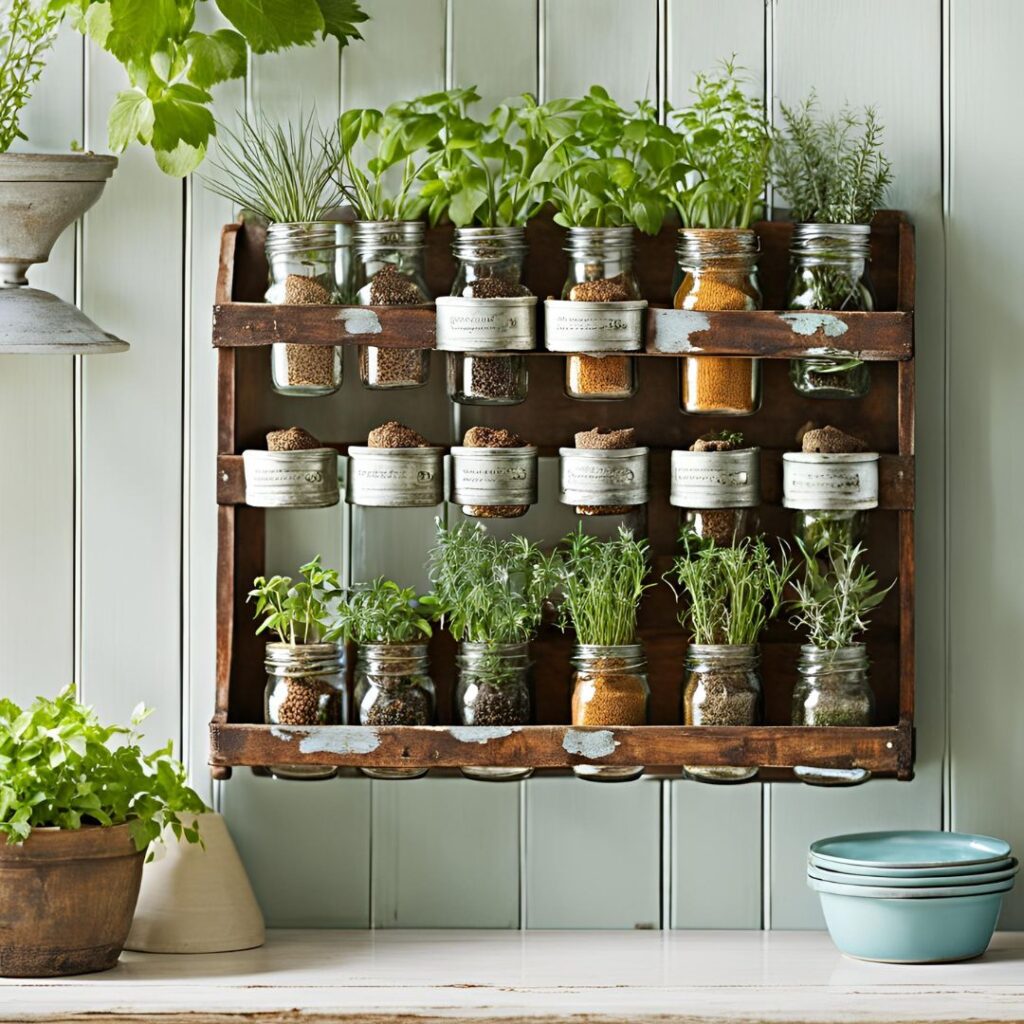
A vintage spice rack can make a charming and functional herb garden, particularly in a kitchen setting. These racks often feature multiple small jars or containers that are ideal for growing herbs.
Simply fill each jar with soil and your chosen herb seeds or seedlings.
The spice rack can be mounted on a wall or placed on a counter, offering easy access to fresh herbs while adding a decorative touch to your kitchen.
This method not only maximizes vertical space but also keeps your herbs organized and visible.
The vintage aesthetic of the spice rack can complement various kitchen styles, blending practicality with a touch of nostalgic charm.
5. Use A Vintage Crate For Your Herb Garden
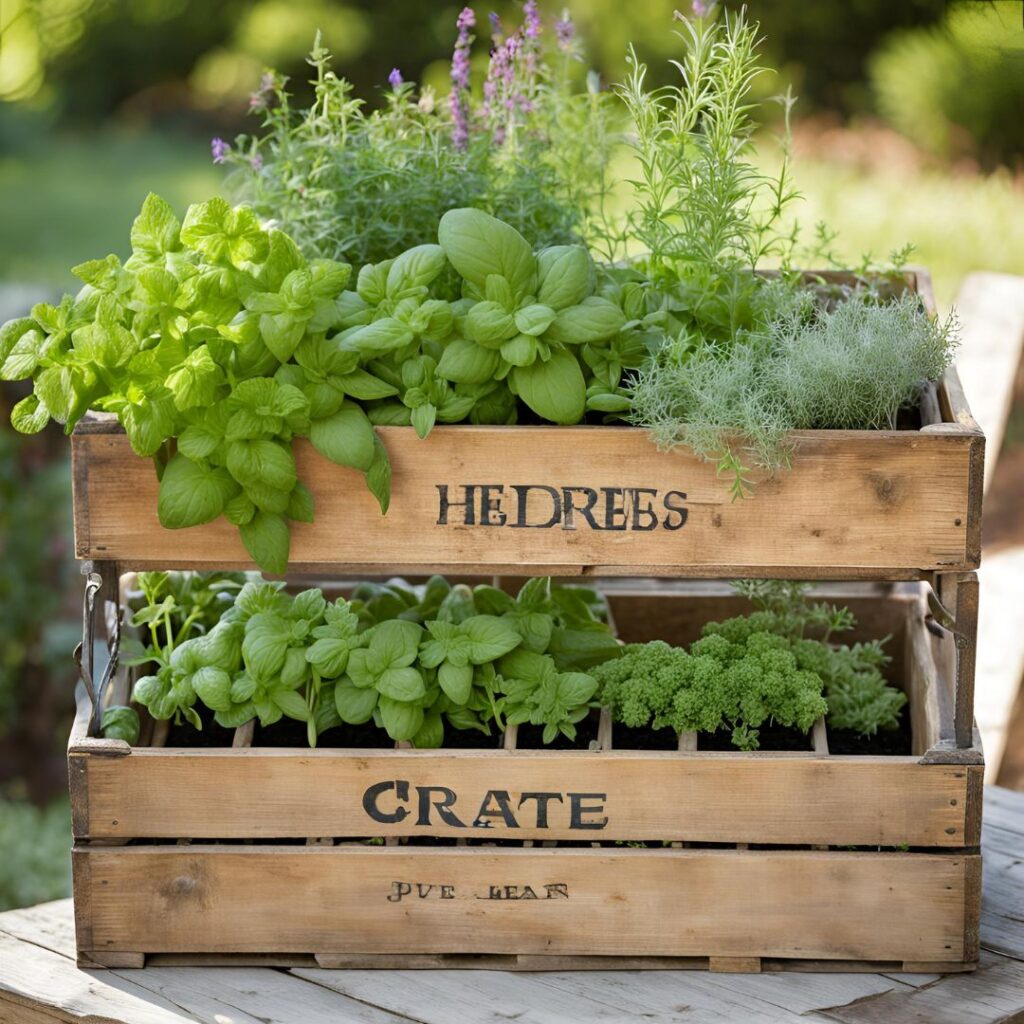
A vintage crate is a versatile and visually appealing option for growing herbs in small spaces.
This container can be used as a planter by placing pots inside or by directly planting herbs in the crate, provided it has proper drainage.
Vintage crates often have a rustic charm that adds character to any space, making them an attractive choice for a garden.
Ensure you line the bottom with a plastic sheet or drill drainage holes to prevent water damage.
This approach allows you to move the crate indoors during harsh weather or to rearrange it according to sunlight conditions.
A vintage crate herb garden can serve as both a functional and decorative element in your home.
6. Use A Vintage Kitchen Gadget For Your Herb Garden
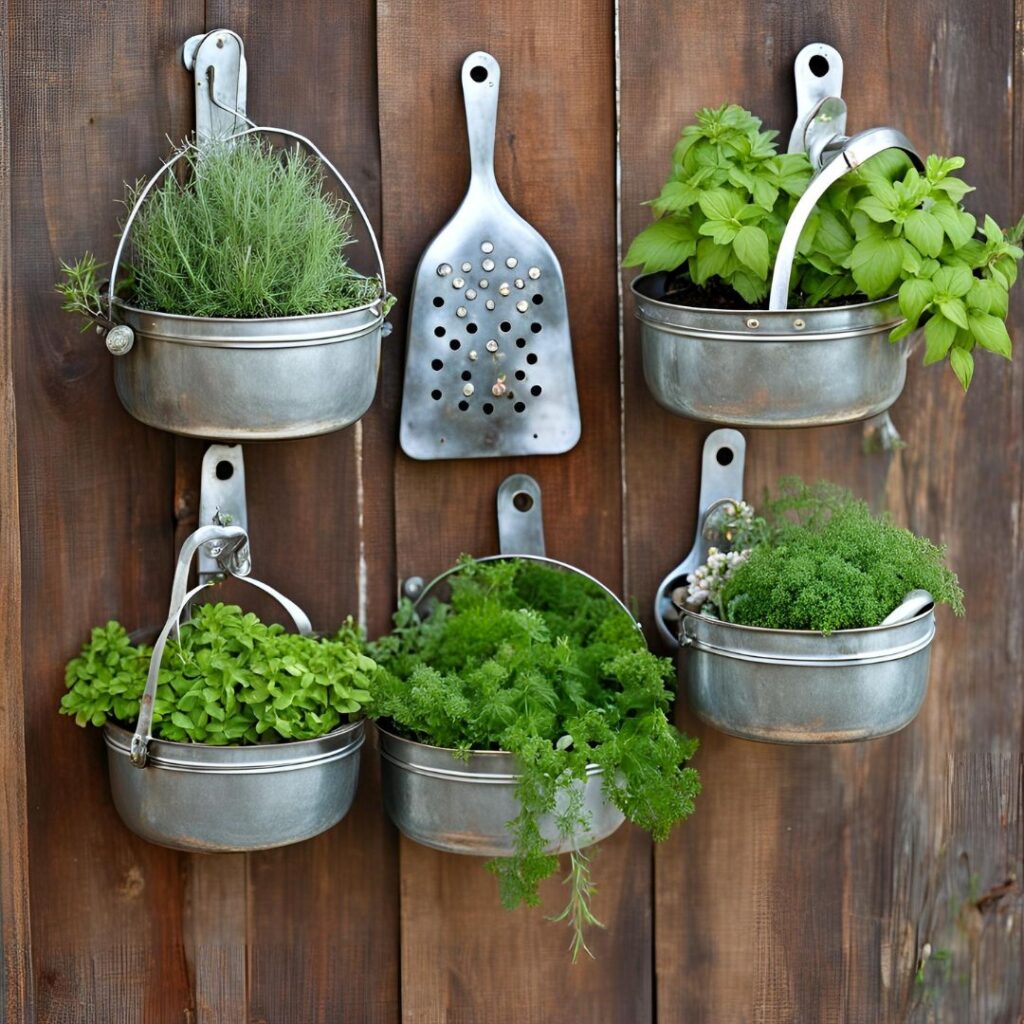
Repurposing vintage kitchen gadgets into herb planters is a creative way to incorporate unique, nostalgic elements into your garden.
Items such as old colanders, strainers, or metal lunchboxes can be transformed into charming herb containers. These gadgets typically have built-in drainage due to their design, which makes them suitable for growing herbs.
To use a vintage colander, for instance, simply fill it with soil and plant your herbs. The handles allow for easy hanging or placement in your garden space.
This approach not only gives new life to old items but also adds a quirky and personal touch to your herb garden, blending functionality with vintage flair.
7. Use A Vintage Tackle Box For Your Herb Garden
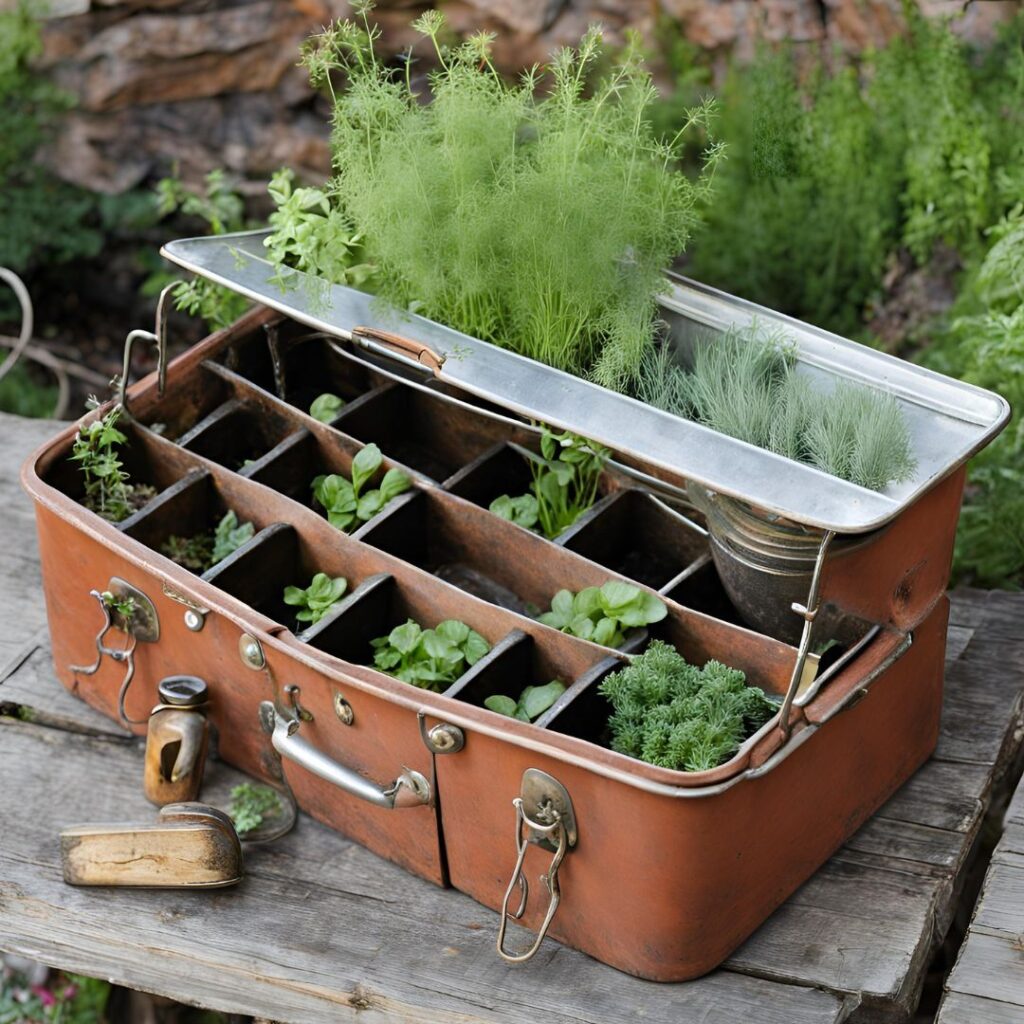
A vintage tackle box offers a unique and portable solution for growing herbs, especially in small or rented spaces.
This container, originally designed for fishing gear, can be repurposed to hold small pots or directly plant herbs in its compartments.
The tackle box’s portability allows you to move your herb garden between indoor and outdoor spaces as needed, adapting to varying light conditions.
The individual compartments are ideal for separating different herb varieties and keeping them organized.
This method is particularly useful for those who need a flexible gardening solution that can be easily relocated or adjusted based on seasonal changes and sunlight availability.
8. Use A Vintage Sewing Box For Your Herb Garden
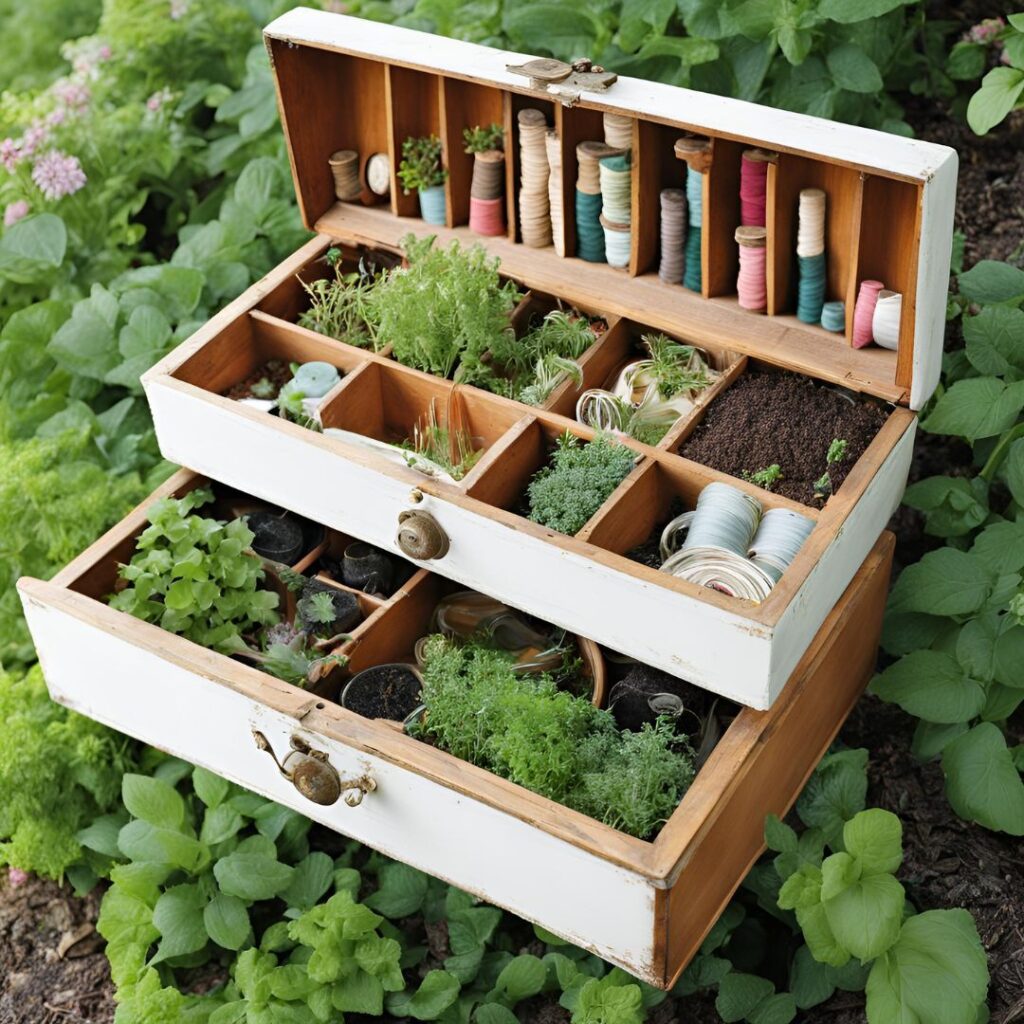
Transforming a vintage sewing box into a herb garden is a delightful way to merge gardening with nostalgia.
Sewing boxes, with their various compartments and storage drawers, can be adapted for growing herbs by planting in the top sections and using the drawers for gardening tools or small pots.
This setup is ideal for small balconies or decks, providing a compact and charming way to cultivate herbs.
The vintage sewing box’s design adds character and organization to your garden space, while its compartments make it easy to keep herbs and gardening supplies neatly arranged.
This project combines functionality with a touch of vintage elegance, enhancing your gardening experience.
9. Use A Vintage Soda Crate For Your Herb Garden
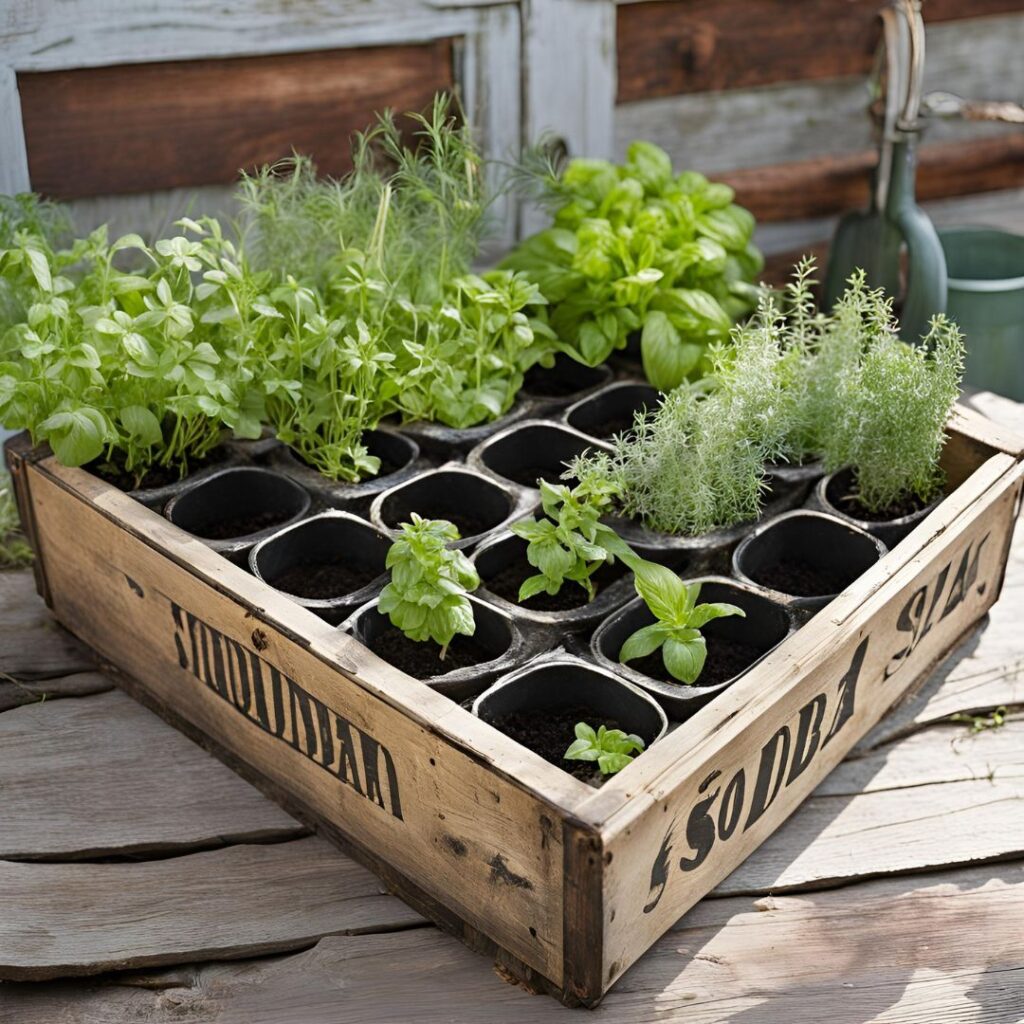
A vintage soda crate is a practical and stylish choice for a small herb garden, offering multiple compartments that are perfect for growing different herbs.
The crate’s design allows you to plant herbs in small pots or directly in the compartments, depending on your preference.
The vintage aesthetic adds a rustic charm to your garden, making it a decorative as well as functional piece.
This type of crate can be placed on a patio, balcony, or even indoors, providing flexibility in how and where you use it.
Ensure the crate has adequate drainage to keep your herbs healthy and thriving. This approach allows you to showcase a variety of herbs while adding a unique touch to your garden space.
10. Use A Vintage Mail Sorter For Your Herb Garden
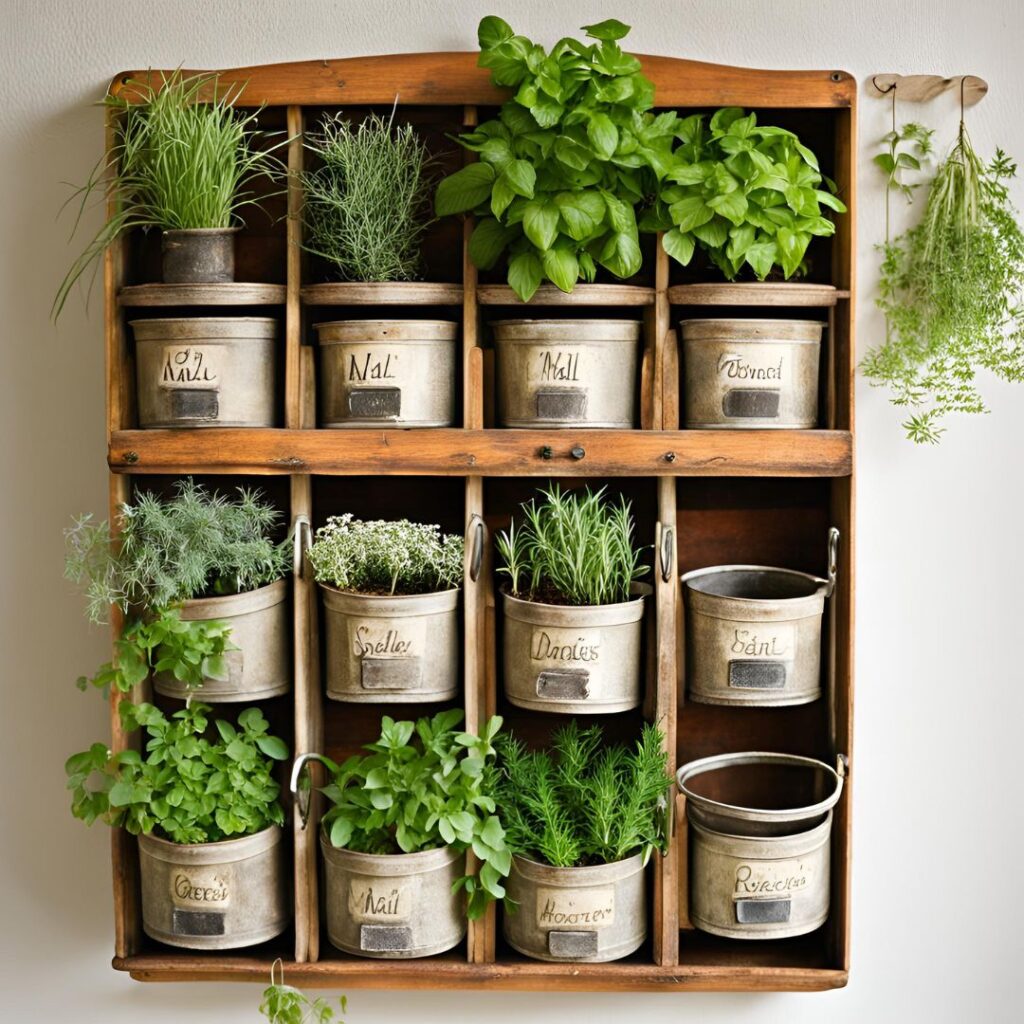
A vintage mail sorter offers an innovative and organized way to create an indoor herb garden.
With its small cubbies, a mail sorter is ideal for growing herbs in individual pots, keeping them separated and easy to manage.
The compact design fits well in small spaces, such as on a countertop or shelf, and the cubbies ensure that each herb has its own space.
This setup not only helps with organization but also adds a vintage, industrial touch to your home decor.
The mail sorter’s built-in structure makes it a practical and visually appealing choice for indoor herb gardening, blending functionality with a classic aesthetic.
11. Use A Vintage Cheese Box For Your Herb Garden
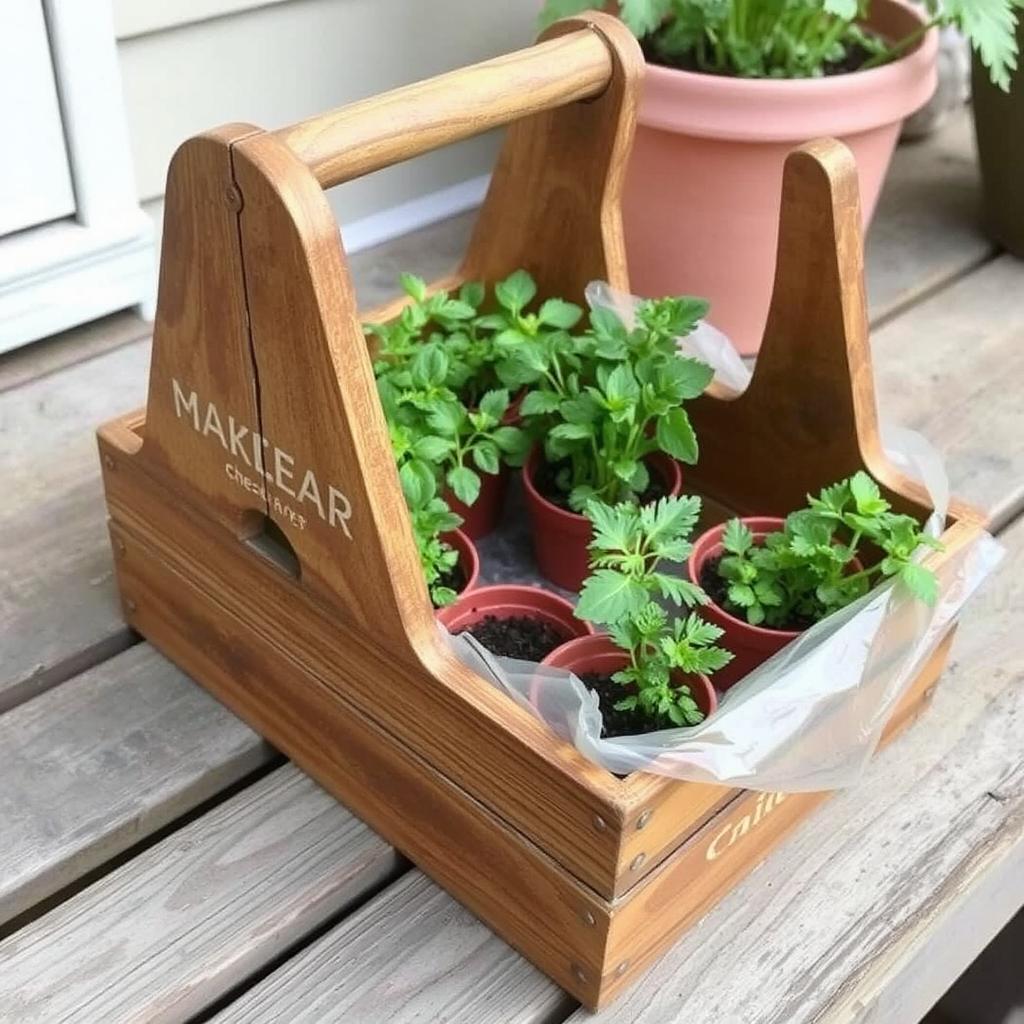
A vintage cheese box can be a charming and functional container for growing herbs. This container, with its rustic appeal, provides a unique way to cultivate herbs while adding character to your garden.
To use a cheese box, line it with a plastic bag to prevent water leakage, then place small pots or directly plant herbs inside.
This setup is particularly suitable for beginners or those looking to grow a variety of herbs in a compact space.
The vintage cheese box’s design allows for easy movement and versatility, making it a practical and aesthetically pleasing choice for both indoor and outdoor herb gardens.
12. Use A Vintage Toolbox For Your Herb Garden
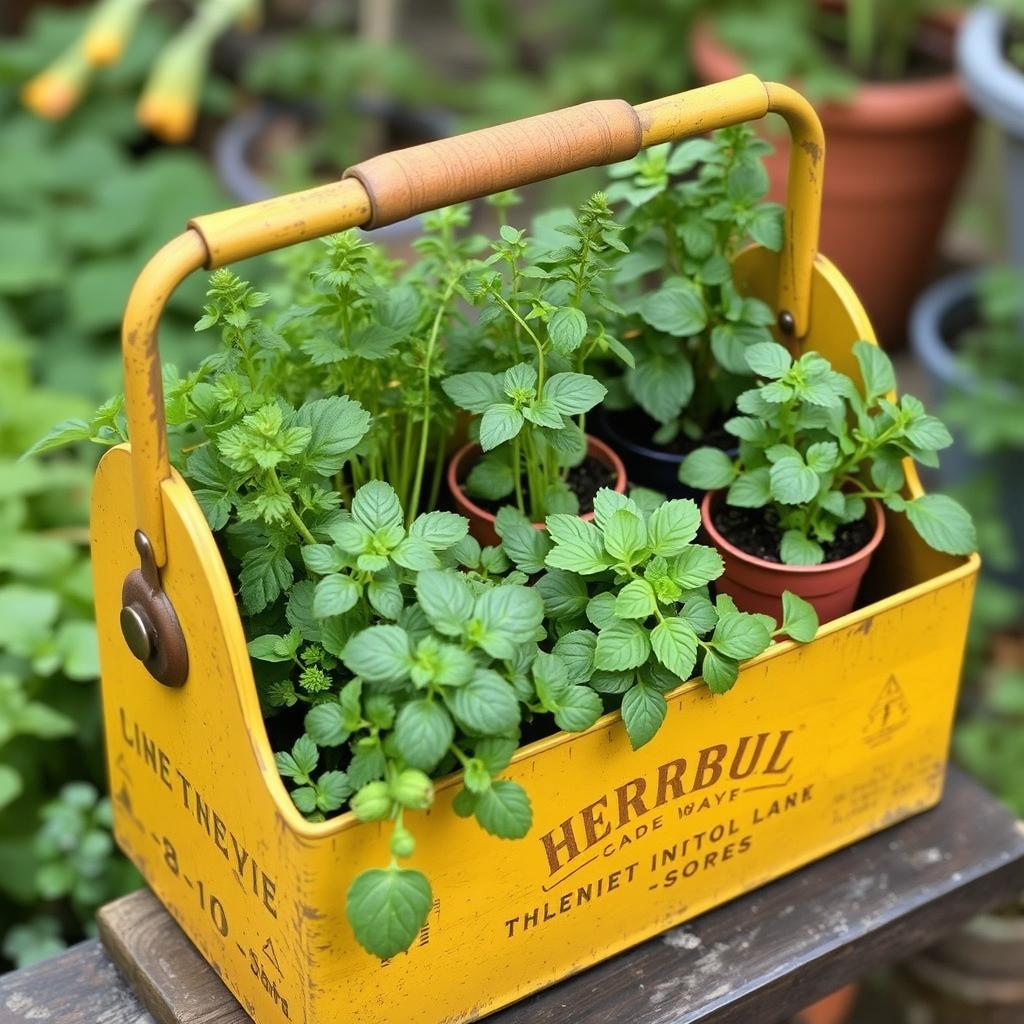
A vintage toolbox offers a practical and versatile option for growing herbs, especially in small spaces.
This container can be used as a planter by filling it with soil and planting herbs directly or by placing small pots inside. The toolbox’s design allows for easy mobility, so you can move your herb garden around as needed.
This is especially useful for renters or those with limited outdoor space. You can also enhance the vintage look by adding a patina with chalk paint or a vinegar-steel wool solution.
This approach combines functionality with a nostalgic aesthetic, making it a great choice for herb gardening in various settings.
Conclusion
Creating a flourishing herb garden in a small space is both feasible and rewarding with the right approach.
Whether you’re working with a compact balcony, a limited windowsill, or repurposed vintage items, there are numerous ways to cultivate fresh, aromatic herbs.
By using creative solutions such as vertical gardens, vintage containers, and indoor setups, you can maximize your space and enjoy the benefits of home-grown herbs.
These innovative ideas not only provide practical gardening solutions but also add a unique charm to your living area. Embrace these strategies to transform your small space into a vibrant, productive herb garden that enhances your home and your culinary endeavors.

